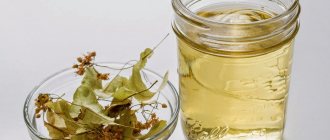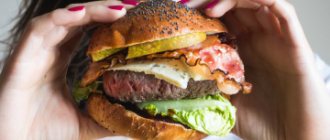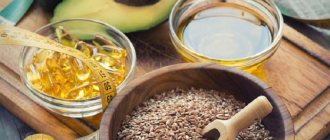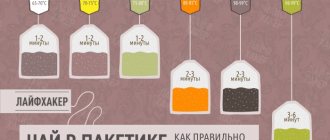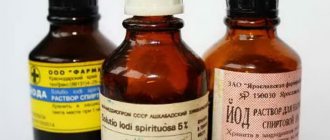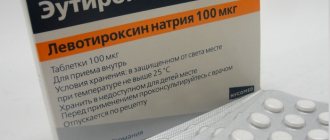What you need to know about consuming oil while dieting? It all depends on the type and goals of the diet itself. Let us list the main types of diets and their relationship to oils and fats:
Medical diets. The consumption of oils is limited and depends on the disease and dietary instructions (for example, in diseases of the gastrointestinal tract, the consumption of fats is limited due to problems in the functioning of the pancreas and gall bladder). In all medical diets, fat consumption is reduced by fried and cooking fats, fatty meats and fish, and sunflower oil during the diet is allowed in limited quantities (like other vegetable oils). This means that the oil is not used for cooking, but for dressing salads or adding to soup when serving.
Mono-diets. These are strict, unbalanced diets for a short period of time (3-5 days). In some of them, vegetable oil is allowed in small quantities and also “in dishes”. But most do not involve any oils at all.
Protein diets, as well as sports diets. The use of oils during a diet is treated in much the same way as for medical purposes, but the amount of oil is less carefully controlled. Since in protein diets the proportion of proteins increases due to a decrease in the proportion of carbohydrates in the first place, and only secondarily - fats, oils in these diets are consumed in almost the same way as in a normal healthy diet.
Healthy eating. Here, oil, both vegetable and butter, is used, but again, the emphasis is on using oils in their pure form, not subjected to culinary processing.
Why are all diets so opposed to cooking oils, and most of them still include vegetable oils in the diet, albeit in limited quantities? The fact is that most of the valuable fatty acids decompose when heated.
Fish
A source of animal protein that is quickly processed in the gastrointestinal tract. A complete set of amino acids is necessary for the normal course of redox processes and the construction of muscle tissue. When losing weight, not only adipose tissue is destroyed. The muscles are the first to suffer. Only animal protein in the diet can preserve and restore them.
The fish also contains a unique complex of omega fatty acids, vitamins E and D, phosphorus, iodine, chromium, and zinc. These substances support general metabolism, protect blood vessels from cholesterol, slow down aging, and prevent thyroid dysfunction. The fattier the fish variety, the healthier it is. Therefore, it is necessary to eat salmon, salmon, herring, and mackerel. To minimize the risk of gaining weight, you can eat it little by little: a serving of 50 g once a day is enough.
Lenten species: pike perch, tuna, cod, pollock, horse mackerel can be eaten in larger quantities: up to 250 g per serving. Especially for those who don't like meat.
Eggs
Another protein dietary product. Eggs have moderate energy value - 1 piece. contains only 40 kcal. But they fill you up for a long time. A morning omelet is often enough to keep you from getting hungry until lunch.
Egg whites are great for maintaining muscle mass while on a diet, and the yolk contains lecithin, a substance that regulates fat metabolism. A couple of pieces a day for breakfast won’t hurt those losing weight. In order not to increase calorie content, frying them in oil is not recommended. It is optimal to boil or cook in a non-stick frying pan.
Use parchment
Evgeny Alexandrov, chef of the Pechorin cafe:
To reduce the amount of oil for frying, you can use regular parchment - baking paper. We fry fish with it so that it does not stick to the pan. You need to drop some oil on a small piece of parchment, place the fish and this entire structure on a heated frying pan. The fish gets a golden crust and doesn't require much oil.
You can fry vegetables, such as broccoli, in the same way. They need to be blanched for 30 seconds in boiling water, then thrown onto parchment paper in a heated frying pan. Quickly fry and you are ready to serve. This produces the most delicious crispy and fresh cabbage.
You won't be able to get rid of oil completely. I fry in refined sunflower oil, sometimes adding butter. You can also use clarified butter. You can even make it at home. Take a stick of butter, put it in a warm place, leave for 40 minutes, it will melt, separate, white whey will collect on the bottom, and 100% fat on top. Then you need to cool it, put it in the refrigerator so that the fat hardens. Make a hole in it and drain the water.
Article on the topic
Three minutes and you're done. Is it possible to cook tasty and healthy meals in the microwave?
Dairy products
Kefir, natural yoghurts, fermented baked milk, yogurt and similar products provide the body with calcium, amino acids and cultures of beneficial lactic acid strains. Regular consumption of this food prevents constipation, removes toxins from the intestines, and normalizes its microflora. Calcium maintains hormonal balance and eliminates swelling. It is absorbed better from dairy products than from any other.
It is recommended for those losing weight to drink yoghurt and kefir as often as possible. But you should choose products with a low fat content - no more than 1.5%. The presence of sugar, starch and artificial fillers in them is also unacceptable. Only natural species are useful.
Calorie content and composition of oil
Oil is an indispensable product in the kitchen and one of the main ingredients in the preparation of many dishes. Each has its own calorie content and glycemic index, which both diabetics and people watching their own weight should know about.
Varieties
People, and especially women, have repeatedly wondered which oil is lower in calories and more beneficial for the body. Cream is obtained by using cream in the production process. They, in turn, can be whole or fermented. If we talk specifically about dairy products, the number of calories in butter is higher than in others. It is used both for frying and as one of the main ingredients in dough, sauces and other dishes.
If we talk in more detail about palm oil, it is obtained from the fruits that the palm tree produces, hence the name. Despite the huge number of negative reviews, it is edible and even has its own benefits for the human body. Its chemical composition contains a lot of beta-carotene, which is why the palm product has a red-orange color. In cooking, it is actively used to create confectionery products, since it perfectly replaces other fats and does not spread. You can find the product in mayonnaise, cheese products, and soup mixtures, but you rarely see it in a bottle in the kitchen of a modern housewife.
Lean meats
These include rabbit, turkey, veal and young chickens. Lamb, pork, and poultry skin are not dietary products. The calorie content of meat useful for weight loss does not exceed 200 units per 100 g. Its varieties contain different complexes of amino acids; it is recommended to include all of them in the diet. Animal protein provides the body with the necessary energy, which is necessary for building new muscle fibers and maintaining cellular metabolism. Vitamin B12, which is fully absorbed only from meat, prevents a decrease in hemoglobin and the development of anemia.
Meat, along with other sources of animal protein, is included in the food set of the so-called keto diet. It is based on the restructuring of metabolism and the burning of internal fat reserves with a limited supply of carbohydrates to the body. Rabbit, turkey and veal quickly relieve hunger and do not overload the gastrointestinal tract with toxins. You shouldn’t give them up even on a strict diet.
Types of oils for proper nutrition
Among vegetable oils, the most popular product is made from sunflower seeds, but there are many more types of vegetable oils. The raw materials used are nuts, pumpkin, sesame and flax seeds, olive or grape seeds. Due to the different bases, finished oil products have different beneficial properties, set of nutrients and use in cooking.
Olive oil
General characteristics: Made from olives. The color is brown-yellow or yellow-green, and the taste is bitter. Lots of Omega-9, less Omega-6, little Omega-3. Vitamins from the fat-soluble group, polyphenols, terpenes and squalenium, sterols.
KBJU: Calorie content per 100 g – 898 kcal, fat per 100 g – 99.8 g. There are no proteins or carbohydrates (as in any other oils).
Benefits: Reducing bad cholesterol, strengthening muscles and bones, blood vessels and heart, and immunity. The risks of diabetes or obesity are reduced. Digestion and metabolism improve, appetite decreases.
Cons or harm: No more than 2 tbsp. l. in a day. Limited for cholecystitis.
Where it is used: Extra Virgin variety – salad dressing and homemade mayonnaise. When frying poultry and fish, use clarified oil. Added to baked goods.
Where you can buy: In supermarkets, small stores, online.
Verdict: The olive product is considered the best vegetable oil for PP and weight loss. But due to the low proportion of Omega-3, it is better to combine it with other types.
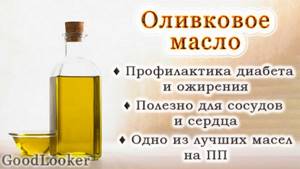
Sunflower oil
General characteristics: Made from sunflower seeds. Shades – light yellow and dark amber. The unrefined variety has a pronounced aroma and taste. Contains: vitamins D, E, F, K and A, sterols, fatty acids. Omega-6 predominates.
KBJU: Calorie content per 100 g – 900 kcal, fat per 100 g – 99.9 g.
Benefits: Stabilization of cholesterol levels, blood clotting and improved digestion, normalization of lipid metabolism. The body is cleansed and the immune system is strengthened. The condition of the skin and hair improves.
Cons or harm: Carcinogens when heated. If you have allergies or diseases of the liver, gallbladder, or digestion, do not take it.
Where to use: Unrefined vegetable oil - vinaigrette, salted mushrooms, sauerkraut. Prepare salad dressings and marinades.
Where to buy: Everywhere, one of the most affordable and popular products.
Verdict: Considered a less healthy vegetable oil than olive or any other variety. It is better to replace or combine with other varieties.
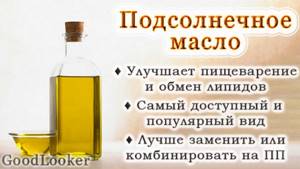
Linseed oil
General characteristics: Made from flax seeds. Golden, wheat-greenish hue, bitter taste. Vitamins – group B, A, D, E and F, K. Selenium, potassium, zinc and magnesium, iron, phosphorus. Omega-3 – 50%, Omega-6 and Omega-9 – 20% each.
KBJU: Calories per 100 g – 898 kcal, fats per 100 g – 99.8 g.
Benefit: Stabilization of blood pressure, hormonal levels and activation of the metabolic process. Toxins are removed, blood sugar is normalized, and the functioning of the gastrointestinal tract is improved. Anti-inflammatory, anti-cancer properties.
Disadvantages or harm: Not for cholecystitis, urolithiasis and allergies, a number of tumors, endocrine disruptions and with blood thinners.
Where it is used: Clean, vegetable salads and potatoes, baked goods. Dressing for appetizers (salted mushrooms, cabbage), porridge.
Where to buy: Sold in supermarkets, health food departments, and convenience stores.
Verdict: The most suitable vegetable oil for a healthy lifestyle, since Omega-3 acids predominate in the composition. This variety is often recommended for weight loss, as it replenishes the supply of vitamins and minerals in a poor diet.

Sesame oil
General characteristics: Made from sesame seeds. Light and dark brown color, slightly nutty aroma, sweetish taste. Omega-6 is many times greater than Omega-3. Vitamins A, C and E, selenium, iron, phosphorus and zinc.
KBJU: Calorie content per 100 g – 900 kcal, fat per 100 g – 99.9 g.
Benefits: Restoration of lipid metabolism, removal of breakdown products and harmful substances from the body, stimulation of muscle growth. It has a beneficial effect on the central nervous system, gastrointestinal tract, skin, mucous membranes, heart and blood vessels.
Cons or harm: Complete ban on frying. Contraindicated for varicose veins and thrombosis, allergies, and a tendency to diarrhea.
Where to use: Additive to salads, boiled noodles, porridges. Used for marinades, sauces for fish and meat, pilaf.
Where you can buy: You can choose vegetable oil in a supermarket or large chains. Rarely found in other stores.
Verdict: A healthy product, enriched with vitamins and minerals. Therefore, it is possible on PP, but in combination with oil containing a lot of Omega-3 acids.

Corn oil
General characteristics: Made from corn seeds. From yellow to brown with red tints. Omega-6 is greater than Omega-3. Vitamins K, E, F and PP, lecithin, iodine, chromium and phosphorus, iron.
KBJU: Calorie content per 100 g – 900 kcal, fat per 100 g – 99.9 g.
Benefits: Slowing down the aging process, normalizing the functioning of the sex glands and hormones, protecting against increased fatigue and muscle weakness. The functioning of the intestines, central nervous system and immunity is stabilized. Easy to digest.
Disadvantages or harm: Prohibited for allergies, acute gastrointestinal diseases and gallstones, problems with blood clotting.
Where to use: Roasting vegetables, potato pancakes, carrot cutlets. Dressing for cereals, soups, pasta. In sauces, mayonnaise, baked goods.
Where to buy: Sold in supermarkets, local chains, online.
Verdict: Vegetable oil with proper nutrition is allowed in combination with other varieties that contain more Omega-3. It is considered a dietary product.
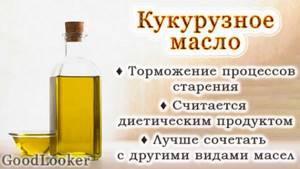
Walnut oil
General characteristics: Made from kernels by cold pressing. Soft and pleasant nutty taste. The ratio of Omega-3, Omega-6 is 1:5. Contains vitamins A, E, group B, calcium, potassium and phosphorus, coenzyme Q10.
KBJU: Calorie content per 100 g – 900 kcal, fat per 100 g – 99.9 g.
Benefits: Support weight loss, remove free radicals. The tone and protection of the body improves. The risk of diseases of the heart and blood vessels, liver, and gastrointestinal tract is reduced. Metabolic processes are normalized.
Disadvantages or harm: Acute gastrointestinal diseases, nausea and vomiting, intolerance.
Where it is used: Marinades for fish and poultry, dressing for pasta, appetizers and salads. In baked goods: pies and cakes.
Where to buy: Sold in supermarkets and health food departments.
Verdict: One of the best vegetable oils in terms of fatty acid balance. It is recommended for weight loss and weight loss and is considered a dietary variety.
Top 10 healthy nuts on PP
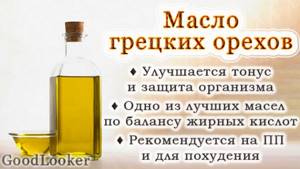
Cedar oil
General characteristics: Made from nut kernels. The color is straw-yellow, the texture is thick, the aroma is light. The proportion of Omega-3 to Omega-6 is 1:2.5. A complete range of vitamins, copper, iodine, sulfur and chromium, and other trace elements.
KBJU: Calorie content per 100 g – 900 kcal, fat per 100 g – 99.9 g.
Benefits: Combating chronic fatigue, replenishing energy, removing excess cholesterol from the body. The functioning of blood vessels, digestion and the central nervous system is improved, bones are strengthened.
Disadvantages or harm: Contraindication – intolerance. There are no other prohibitions.
Where to use: Addition to cereals, snacks and salads. In baking muffins, biscuits or pies, dressing meat dishes.
Where you can buy it: Almost never found in regular stores, you can order it online.
Verdict: It is better to choose cold-pressed vegetable oil. The variety is useful for weight loss and weight loss. Weight comes off faster with a general calorie deficit.

Soybean oil
General characteristics: Made from soy. It has a bright taste, a nutty aroma for an unrefined variety. Pure oil has a pinkish tint. Omega-3 to Omega-6 are normal. Phosphorus, sodium and calcium, phytosterols, vitamins E and C.
KBJU: Calorie content per 100 g – 900 kcal, fat per 100 g – 99.9 g.
Benefits: Activation of metabolism, normalization of digestion, lowering cholesterol. This type of vegetable oil strengthens the kidneys, liver, and heart.
Disadvantages or harm: Prohibited for intolerance or allergies.
Where to use: Dressing for vegetable salads and addition to porridge. For frying fish, meat and baking, only the refined variety.
Where to buy: Rarely found in Russian stores, can be ordered online.
Verdict: This is not the best vegetable oil in terms of composition and properties. For variety, it can be included in the diet with proper nutrition.
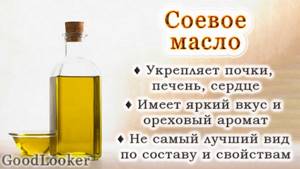
Pumpkin oil
General characteristics: Made from cold-pressed pumpkin seeds. The color is reddish-green. Omega-6 is greater than Omega-3. Vitamins C, K, PP and group B, iron, selenium and zinc, calcium, magnesium. Bioflavonoids.
KBJU: Calories per 100 g – 898 kcal, fats per 100 g – 99.8 g.
Benefits: Normalization of metabolism, removal of harmful substances, cholesterol. Vegetable oil is beneficial for a healthy lifestyle, as it strengthens the entire body and accelerates tissue renewal.
Cons or harm: Diarrhea, gas, bloating. Not for gastrointestinal diseases or stones.
Where it is used: Sweet sauces, marinades for fish and meat. Dressing salad, side dishes from cereals, mashed potatoes or whole potatoes. Additive to vegetable soups.
Where to buy: Sold in supermarkets, online stores.
Verdict: A product rich in nutrients - recommended for weight loss and weight loss. It is better to combine with other oils.
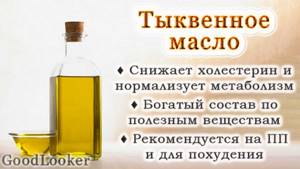
Mustard oil
General characteristics: Made from mustard seeds. Bright color, sharp taste. The proportion of Omega-3 to Omega-6 is 1:2.5. Vitamins A, E and D, group B, phytosterols, sinigrin, potassium and magnesium, calcium, iron.
KBJU: Calorie content per 100 g – 900 kcal, fat per 100 g – 99.9 g.
Benefits: Removing excess cholesterol, improving metabolism and gastrointestinal functions. Lipid metabolism is restored, blood vessels are strengthened.
Disadvantages or harm: Not suitable for allergies, acute gastrointestinal diseases, myocarditis.
Where to use: Salad dressing, addition to soups, baked goods. With meat, fish and stewed vegetables.
Where you can buy: In supermarkets, small stores, online. Cheap and widely available variety.
Verdict: Healthy vegetable oil, recommended for consumption on PP. Pairs with many dishes.

Coconut oil
General characteristics: Made from coconut pulp. Thick white-yellowish mass. No Omega-3, only Omega-6. A complete range of vitamins, potassium and phosphorus, selenium, magnesium, calcium, iodine. Polyphenols, phytosterols.
KBJU: Calorie content per 100 g - 900 kcal, fat per 100 g - 99.9 g. Sometimes proteins remain.
Benefits: Increased physical activity, improved gastrointestinal function and cholesterol cleansing. It has a beneficial effect on every organ and system of the body.
Disadvantages or harm: Do not use if you have allergies, gastrointestinal diseases, or cancer.
Where to use: Frying (does not release carcinogens), addition to tea, coffee and cocktails. Salad dressing, puree, addition to meat or fish.
Where you can buy: In supermarkets, online, health and sports nutrition stores.
Verdict: One of the best vegetable oils, although it does not contain Omega-3. When losing weight, you need to monitor the dosage. Replaces other varieties for frying.
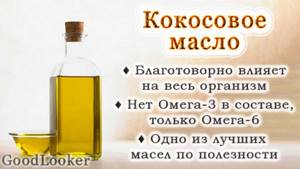
Grape seed oil
General characteristics: Made from grape seeds. Light yellow-greenish tint. Omega-3 is minimal, with a significant predominance of Omega-6. Enzymes, vitamins A, E and group B, tannins, chlorophyll and bioflavonoids.
KBJU: Calorie content per 100 g – 900 kcal, fat per 100 g – 99.9 g.
Benefit: Normalization of the functioning of the endocrine glands and fat metabolism. The nervous, immune system and blood vessels are strengthened, swelling goes away.
Disadvantages or harm: Abdominal discomfort if the dosage is exceeded.
Where to use: Frying, baking, deep frying. Dressing for salads, for example, with pear, arugula and cheese, addition to meat and fish dishes, side dishes.
Where you can buy: In large supermarkets and chains, you can order online.
Verdict: It has superior beneficial properties to the olive variety and is less dense. However, it is not the best vegetable oil for Omega-3 content.

Rapeseed oil
General characteristics: Made from rapeseed. Palette of yellow flowers. A good ratio of Omega-3 to Omega-6 for oil is 1:1.6. Contains a large amount of phosphorus, carotenoids and vitamin E.
KBJU: Calorie content per 100 g – 900 kcal, fat per 100 g – 99.9 g.
Benefits: Normalization of metabolism, strengthening the walls of blood vessels, reducing cholesterol in the blood. Decay products are removed and muscles are toned.
Cons or harm: Erucic acid, which accumulates in organs, is dangerous.
Where it is used: In cold dishes, homemade mayonnaise, sauces, salad dressings. Added to baked goods, meat and fish dishes and soups.
Where to buy: Can be purchased in online stores. An affordable product, but not very popular in Russia.
Verdict: Rapeseed oil is easily digestible, so it is recommended on diets. There is no need to abuse it. It is better to combine with other varieties.
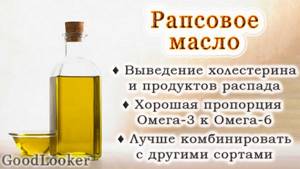
Sea buckthorn oil
General characteristics: Made from berries by cold pressing. Orange-red color, characteristic odor. If the oil is from seeds, then Omega-3 reaches up to 30%. Carotenoids, copper and zinc, selenium, minerals, vitamins and bioflavonoids.
KBJU: Calorie content per 100 g – 895 kcal, fat per 100 g – 99.5 g.
Benefit: Activation of fat burning thanks to palmitoleic acid. This vegetable oil is used in a healthy lifestyle to restore the balance of hormones, strengthen the immune system, and prevent diabetes.
Disadvantages or harm: Not for pancreatitis, cholecystitis, tendency to diarrhea, stones in the urinary or gall bladder, ulcers and hepatitis, intolerance.
Where to use: Salad dressing, but only in combination with other varieties. Added to baked goods, combined with citrus fruits.
Where to buy: Can be ordered through the online store.
Verdict: Not a very suitable oil for consumption due to its specific taste and smell. Not suitable for frying.

Hemp oil
General characteristics: Made from hemp seeds. Light or dark green in color with a herbaceous taste and aroma. Omega-6 is greater than Omega-3. Vitamins D, C, E and group B, beta-carotene, calcium, magnesium, zinc and selenium, iron, iodine.
KBJU: Calorie content per 100 g – 900 kcal, fat per 100 g – 99.9 g.
Benefits: Accelerates digestion, metabolism, improves gastrointestinal function. Hunger comes later, appetite decreases, and the body becomes full. The future appearance of fatty deposits is prevented.
Disadvantages or harm: Prohibited for chronic diseases or allergies.
Where it is used: Supplementation of ready-made dishes: soups, salads, sauces, dressings, pastas or vegetable mixes. Added to porridge and baking dough.
Where to buy: Sold in supermarkets and health food departments.
Verdict: Hemp oil is no less useful than other varieties. The product is regaining popularity, nutritionists often recommend it for weight loss, PP.
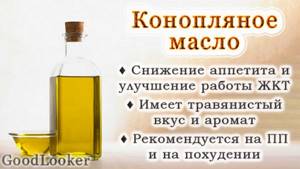
Buckwheat
A unique dietary product. It is several times less caloric than cereals, contains little starch, but a lot of fiber and vegetable protein. Buckwheat porridge with water is the basis of many weight loss diets. This cereal saturates the body with iron, normalizes intestinal function, helps cleanse the liver, removes toxins and accelerates metabolic processes.
The energy in buckwheat is enough to maintain strength even during heavy physical activity. Dishes made from it do not need additives in the form of fats or meat; they are complete. It is recommended for anyone losing weight to regularly include them in their diet.
Mustard oil for frying. Unrefined mustard oil: benefits, harm and use

If you are a little bored and tired of the usual vegetable oils, then turn your attention to unrefined mustard oil. It is produced by pressing mustard seeds. This product can be used as a replacement for sunflower or olive oil when preparing a variety of dishes. Such products are also used in cosmetology.
But it must be used with caution, since, in addition to its beneficial properties, this oil has a number of contraindications.
Beneficial features
When eaten
Unrefined mustard oil has invaluable benefits for the entire body if consumed together with other foods.
- Allows you to cope with pathogenic microorganisms that are in the intestines. Its beneficial effect is manifested in the fight against pathogens of serious diseases such as salmonella, staphylococcus and listeria. Due to these properties, cold-pressed mustard oil is used in hot countries to combat intestinal disorders and as a counteract to food poisoning.
- It is a preventative against cancer - helps reduce the risk of malignant tumors.
- Helps improve the functioning of the digestive system - activates the production of gastric juice and bile. Virgin mustard oil can also increase appetite, so it is recommended to be consumed by people who are underweight and want to gain weight.
Vegetable oils
Fats themselves, including vegetable fats, are not dietary. But refusing them provokes disruptions in the functioning of the endocrine system. And hormonal imbalance is fraught not with loss, but with accumulation of excess weight.
A moderate amount of vegetable oil helps maintain the health of the stomach and intestines, saturates with vitamins A, E, D, and polyunsaturated fatty acids. Useful ones include: flaxseed, olive, sunflower and other oils. When dieting, it is important to use only unrefined, cold-pressed products. They do not undergo chemical treatment and retain natural vitamins and minerals. They should not be used for frying, but for seasoning ready-made dishes. About 20 g of vegetable oil per day will not harm those losing weight.
Grapeseed oil for frying. What oil is best for frying? Oil review
The debate about what is the right way to cook food has been going on for several decades.
What oil is best for frying? Scientific information is constantly changing, and besides, sometimes some food concern aggressively enters into the discussion with an advertisement for its product and changes the perception of part of the public.
For consumers, only the opinion of experts is really important, although it should be taken with a certain restraint.
Scientists' opinion on the best oil for frying
When drawing conclusions about how useful a particular fat is for frying, scientists do not take into account the issue of taste. The fact is that at high temperatures, changes occur in the structure of the oil and various substances harmful to health may arise. And this is what is being discussed in various analyses. In general, it is indicated that those fats that contain monounsaturated fatty acids are better suited for frying. Those in which polyunsaturated fats predominate are better for cold cooking.
Salo
Both pork and goose are suitable, although the latter usually has a higher water content. Therefore, more of it is required for cooking. Lard can be used for excellent cooking; it copes well with high temperatures, but has a high content of saturated acids. And pork is still full of cholesterol. People who lead a healthy lifestyle need to control their consumption.
Palm oil
Very suitable for frying, but, unfortunately, like lard, it has a high content of saturated acids.

Coconut oil
A similar case is with lard and palm lard. Great for preparing a variety of dishes, but be careful with calories and cholesterol!
Rapeseed oil
Refined is often called one of the best oils for frying in terms of saturated acid content. It has another advantage: after frying, it is well absorbed into napkins, and thanks to this, dishes turn out to be somewhat healthier.
Sunflower oil
In refined form, it is also a quality frying oil. Unrefined is only suitable for short cooking and stewing. Of course, if you like a specific taste.
Rice oil
It is very good to cook with, but unfortunately the high price is an obstacle. At high temperatures it overcooks very slowly and has a high content of natural antioxidants.
Corn oil
A universal product. It can be used for frying, stewing and deep-frying. Does not produce any harmful compounds. It is used sparingly, does not smoke and does not burn.
Olive oil
Natural (virgin) is ideal for salads and very quick cooking of vegetables, pasta, frying onions until translucent, etc. Is it possible to fry in olive oil? The usual way is not worth it.
If you want to cook some breaded foods where you need to keep the oil at high temperature for a long time, it is better to choose refined oil, which is not at all suitable for cold cooking.
Butter
For short-term frying (for example, scrambled eggs, toast or roasting vegetables for soup), it can be used, but if heated for a long time, it contains dangerous substances, so it is very unsuitable for this.
But if you heat it, it changes its qualities and withstands a higher heating point.
Examples of unsuitable oils that should not be used for frying at all:
- from grape seeds,
- sesame,
- flaxseed
- soft margarine.
With hydrogenated fats, things are a little more complicated. Some are very high quality, others are quite the opposite, especially those that are cheaper, so it is advisable to avoid them when frying.
Thus, it turns out that there should be at least two bottles of oil on the shelf - one for frying, and the second for cold dishes. Well, before you succumb to the calls of another miracle oil advertisement, remember your everyday experience. Why exchange good things for dubious better ones?
Green vegetables
Ideal for diet foods with “negative” calorie content. Incredible, but true: the more you use them, the faster you lose weight. All types of cabbage and lettuce, cucumbers, spinach, celery and their other green counterparts contain a meager amount of calories. They are not enough even to digest vegetables. But the pulp of the products is saturated with coarse fiber, folic acid, calcium, and antioxidants.
Vegetables prevent fat deposition, facilitate digestion, prevent constipation, and eliminate toxins. They quickly fill the stomach and cause satiety, allowing you to avoid overeating. Therefore, it is advisable to eat vegetable side dishes and salads on a diet daily.

